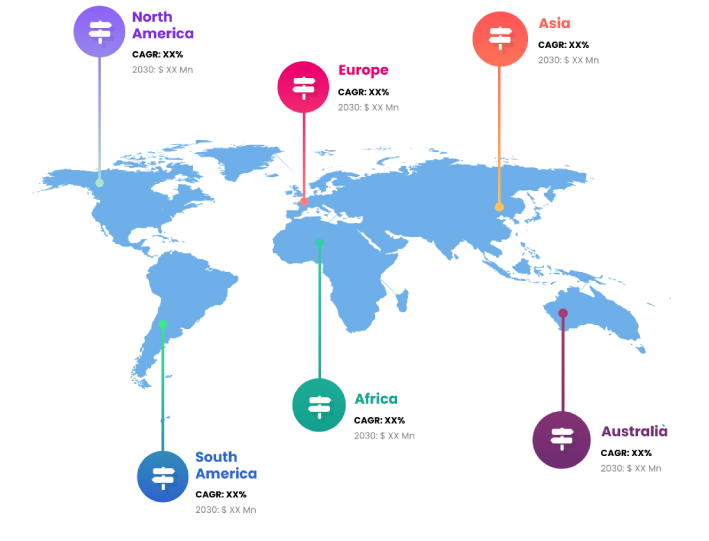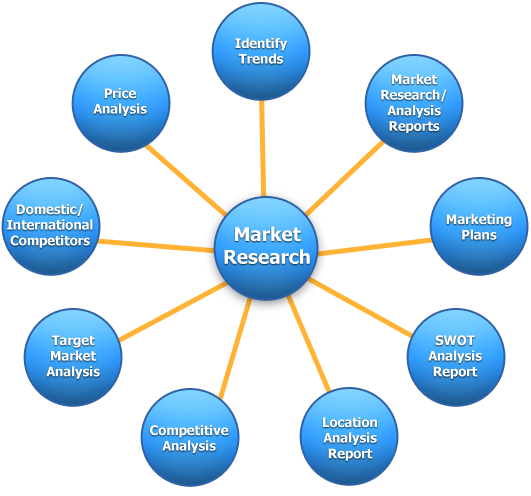Optoelectronics, also spelt "optronics," refers to the development of electronics that can sense and respond to different wavelengths of light. Optoelectronics is the study of the fundamental quantum effects of light on electronic materials, especially semiconductors, in the presence of electric fields. Optoelectronics makes considerable use of semiconductor materials. Optical fibre communications, laser technology, and optical metrology are just a few examples of the many uses for optoelectronic devices.

Optoelectronics is an emerging field of technology that makes use of electronics to generate, detect, and control light. These electronic parts have several potential uses, including in defence and security systems, telecommunications, healthcare, and automated environments. Popular optoelectronic devices that provide direct electron-photon conversion include light-emitting diodes (LEDs), photodiodes (PDs), and solar cells. Not only has optoelectronics benefited the medical, communications, aerospace, and defence sectors, but it has also been instrumental in ensuring the nearly uninterrupted operation of the communications sector.
The Japanese semiconductor industry relies heavily on sales of optoelectronic devices, and is seeing growth in several sectors, including the electronics and electric vehicle markets. As a result of rising demand for optical systems in healthcare and automotive sectors, rising needs for advanced consumer electronics devices, and high demand for long-lasting and low-power-consuming equipment, the optoelectronics market in Japan is growing significantly. The increasing popularity of electric vehicles, self-driving trucks, and autonomous vehicles is also expected to increase demand for optoelectronic devices, which would in turn improve the Japanese market. As the country's demand for smartphones, electric vehicles, and other devices that use optocouplers increases substantially, the supply of these components is expected to increase. Communication systems frequently use optocouplers.
The Optoelectronics Market is broken down in this study into its component parts, with each submarket covered in depth through revenue growth projections and analyses of current market trends. The Optoelectronics Market research examines the leading growth prospects, threats, and drivers in the industry. The competitive landscape has been drawn taking into account the most up-to-date market changes and strategic moves, such as expansion, product launch and development, collaboration, merger, and acquisition. The study covers the leading companies in the market and provides an in-depth analysis of their capabilities as they pertain to each section of the Optoelectronics industry.
The sensors market is expected to increase at a faster clip in 2022 than in any other year of the forecast.
LED, laser diode, image sensors, optocouplers, photovoltaic cells, and other types make up just few of the submarkets that make up the Optoelectronics Market. Among them, the sensors market is expected to grow at a faster rate than the others during the coming years. The growing need for photodiodes, image sensors, and optical sensors in a wide range of applications has boosted the sensors market. Plasmonic colour sensors are used for LED monitoring and colorimetry, among other applications; CMOS imaging sensors are used in recording devices, spectroscopy, and LiDAR technology systems; and optical sensors increase safety in the textile industry. The sensors subsegment dominates the Japanese optoelectronics industry because sensors are used in so many different contexts.
More than 33.6% of projected sales revenue came from the measurement category in 2022.
Lighting, security & surveillance, communication, measurement, displays, and others are all subsets of the Optoelectronics Market. Among these, the measurement segment is expected to provide the most income (33.6% of the total) over the forecast period. Due to its superior accuracy, optical measuring systems have the largest market share and are used in a wide variety of industries for production control and surveillance, as well as visual inspection and other purposes.
The consumer electronics market was responsible for more than 34.2% of total revenue in 2022.
The Optoelectronics Market is broken down into various submarkets based on its respective end-users, such as the automobile, aircraft & defence, consumer electronics, IT, healthcare, real estate & construction, manufacturing, and others. Specifically, consumer electronics will account for 34.2% of total market sales at the end of the projection period. The development of innovative electronic gadgets like smartphones, high-end cameras, smart television displays, LED projectors, organic LEDs, and flexible 3-D displays, as well as the widespread adoption of optoelectronic elements in their production, are to thank for this trend. Demand for optoelectronics is expected to increase throughout the forecast period as a result of the growing popularity of such devices in the country.
Report Coverage
Global Optoelectronics research report categorizes the market for global based on various segments and regions, forecasts revenue growth, and analyzes trends in each submarket. Global Optoelectronics report analyses the key growth drivers, opportunities, and challenges influencing the global market. Recent market developments and Optoelectronics competitive strategies such as expansion, product launch and development, partnership, merger, and acquisition have been included to draw the competitive landscape in the market. The report strategically identifies and profiles the key Optoelectronics market players and analyses their core competencies in each global market sub-segments.
| REPORT ATTRIBUTES | DETAILS |
|---|---|
| Study Period | 2017-2030 |
| Base Year | 2022 |
| Forecast Period | 2022-2030 |
| Historical Period | 2017-2021 |
| Unit | Value (USD Billion) |
| Key Companies Profiled | SAMSUNG, OSRAM Opto Semiconductors GmbH., Koninklijke Philips N.V., Vishay Intertechnology, Inc., OmniVision Technologies, Inc., Panasonic Corporation, Mouser Electronics, Inc., STANLEY ELECTRIC CO., LTD., ROHM CO., LTD., Mitsubishi Electric Corporation, General Electric Company, Broadcom, MagnetiMarelli., Renesas Electronics Corporation., Excellence Optoelectronics Inc., Sharp Corporation, and Merck KGaA, among others. |
| Segments Covered | • By Product |
| Customization Scope | Free report customization (equivalent to up to 3 analyst working days) with purchase. Addition or alteration to country, regional & segment scope |
Key Points Covered in the Report
- Market Revenue of Optoelectronics Market from 2021 to 2030.
- Market Forecast for Optoelectronics Market from 2021 to 2030.
- Regional Market Share and Revenue from 2021 to 2030.
- Country Market share within region from 2021 to 2030.
- Key Type and Application Revenue and forecast.
- Company Market Share Analysis, Optoelectronics competitive scenario, ranking, and detailed company
profiles. - Market driver, restraints, and detailed COVID-19 impact on Optoelectronics
Market
Competitive Environment:
The research provides an accurate study of the major organisations and companies operating in the global Optoelectronics market, along with a comparative evaluation based on their product portfolios, corporate summaries, geographic reach, business plans, Optoelectronics market shares in specific segments, and SWOT analyses. A detailed analysis of the firms' recent news and developments, such as product development, inventions, joint ventures, partnerships, mergers and acquisitions, strategic alliances, and other activities, is also included in the study. This makes it possible to assess the level of market competition as a whole.
List of Major Market Participants
SAMSUNG, OSRAM Opto Semiconductors GmbH., Koninklijke Philips N.V., Vishay Intertechnology, Inc., OmniVision Technologies, Inc., Panasonic Corporation, Mouser Electronics, Inc., STANLEY ELECTRIC CO., LTD., ROHM CO., LTD., Mitsubishi Electric Corporation, General Electric Company, Broadcom, MagnetiMarelli., Renesas Electronics Corporation., Excellence Optoelectronics Inc., Sharp Corporation, and Merck KGaA, among others.
Primary Target Market
- Market Players of Optoelectronics
- Investors
- End-users
- Government Authorities
- Consulting And Research Firm
- Venture capitalists
- Third-party knowledge providers
- Value-Added Resellers (VARs)
Market Segment:
This study forecasts global, regional, and country revenue from 2019 to 2030. INFINITIVE DATA EXPERT has segmented the global Optoelectronics market based on the below-mentioned segments:
Global Optoelectronics Market, By Type
LED
Laser Diode
Image Sensors
Optocouplers
Photovoltaic Cells
Others
Global Optoelectronics market, By Application
Lighting
Security & Surveillance
Communication
Measurement
Displays
Others
Global Optoelectronics Market, By End User
Automotive
Aerospace & Defense
Consumer Electronics
Information Technology
Healthcare
Residential & Commercial
Industrial
Others
Global Optoelectronics market, Regional Analysis
- Europe: Germany, Uk, France, Italy, Spain, Russia, Rest of Europe
- The Asia Pacific: China,Japan,India,South Korea,Australia,Rest of Asia Pacific
- South America: Brazil, Argentina, Rest of South America
- Middle East & Africa: UAE, Saudi Arabia, Qatar, South Africa, Rest of Middle East & Africa
You will get in-depth and extensive optoelectronics market market research and competitor analysis for your business to help you develop more profound insights into the optoelectronics market Market.
Through INFINITIVE Data Expert is a professional Market Research services, I will identify the optoelectronics market market size, demand & opportunities, growth rate, and target audience with a comprehensive analysis of your competitors.



